
Discovering Ulsan: South Korea's Hidden Gem
Explore Ulsan, South Korea's industrial titan and a treasure trove of natural beauty, cultural heritage, and delicious cuisine.
Ulsan, a vibrant coastal city in South Korea, is a blend of modernity and tradition. Known as the industrial powerhouse of the nation, it may surprise you with its scenic beauty, cultural landmarks, and warm hospitality. Ulsan is home to the world's largest automobile assembly plant, shipyard, and oil refinery, making it an industrial marvel. Yet, it also offers serene landscapes and breathtaking coastlines that capture the hearts of its visitors. The city boasts several natural attractions, including the stunning Taehwagang River, which is surrounded by lush bamboo forests and vibrant flower gardens. The river park is a perfect spot for leisurely strolls and picnics, providing a peaceful escape from the hustle and bustle of city life. For those who love the sea, Jinha Beach offers golden sands and clear blue waters, ideal for a relaxing day by the shore or engaging in water sports. Cultural enthusiasts will find Ulsan rich in history and heritage. Visit the Ulsan Museum to learn about the city's past, or explore the ancient petroglyphs at Bangudae Terrace, which date back to prehistoric times. The city also hosts the Ulsan Grand Park, the largest urban park in South Korea, offering a blend of recreational facilities, botanical gardens, and wildlife. Food lovers will delight in Ulsan's culinary scene, which includes fresh seafood and traditional Korean dishes. Don't miss out on trying 'mulhoe,' a refreshing cold fish soup, or 'hwajeon,' sweet flower pancakes that are a local specialty. With its unique mix of industrial innovation and natural splendor, Ulsan promises an unforgettable experience for every traveler.
Local tips in Ulsan
- Visit the Taehwagang River Park during spring or autumn for the best flower blooms and foliage.
- Try the local seafood at the Bangeojin Fish Market for a fresh and authentic dining experience.
- Use the city's extensive public transportation system for easy and affordable travel between attractions.
- Check the local calendar for festivals like the Ulsan Whale Festival, which offers unique cultural experiences.
- Consider staying in the Dong-Gu area for its proximity to both beaches and industrial tour sites.
Discovering Ulsan: South Korea's Hidden Gem
Ulsan, a vibrant coastal city in South Korea, is a blend of modernity and tradition. Known as the industrial powerhouse of the nation, it may surprise you with its scenic beauty, cultural landmarks, and warm hospitality. Ulsan is home to the world's largest automobile assembly plant, shipyard, and oil refinery, making it an industrial marvel. Yet, it also offers serene landscapes and breathtaking coastlines that capture the hearts of its visitors. The city boasts several natural attractions, including the stunning Taehwagang River, which is surrounded by lush bamboo forests and vibrant flower gardens. The river park is a perfect spot for leisurely strolls and picnics, providing a peaceful escape from the hustle and bustle of city life. For those who love the sea, Jinha Beach offers golden sands and clear blue waters, ideal for a relaxing day by the shore or engaging in water sports. Cultural enthusiasts will find Ulsan rich in history and heritage. Visit the Ulsan Museum to learn about the city's past, or explore the ancient petroglyphs at Bangudae Terrace, which date back to prehistoric times. The city also hosts the Ulsan Grand Park, the largest urban park in South Korea, offering a blend of recreational facilities, botanical gardens, and wildlife. Food lovers will delight in Ulsan's culinary scene, which includes fresh seafood and traditional Korean dishes. Don't miss out on trying 'mulhoe,' a refreshing cold fish soup, or 'hwajeon,' sweet flower pancakes that are a local specialty. With its unique mix of industrial innovation and natural splendor, Ulsan promises an unforgettable experience for every traveler.
When is the best time to go to Ulsan?
Iconic landmarks you can’t miss
Taehwagang National Garden
Explore Taehwagang National Garden, a lush oasis in Ulsan filled with vibrant flora, tranquil pathways, and breathtaking seasonal beauty.

Daewangam Park
Explore Daewangam Park in Ulsan, a serene escape offering stunning coastal views, lush nature, and rich cultural heritage.

Jangsaengpo Whale Museum, Ulsan
Discover the marine marvels at Jangsaengpo Whale Museum, a must-visit in Ulsan, South Korea, showcasing the fascinating world of whales and conservation.

Amethyst Cavern Park
Explore the enchanting Amethyst Cavern Park, a unique theme park in Ulsan, South Korea, showcasing stunning amethyst formations and thrilling attractions.

Ilsan Beach
Experience the breathtaking beauty and tranquility of Ilsan Beach in Ulsan, a hidden gem for beach lovers and adventure seekers alike.
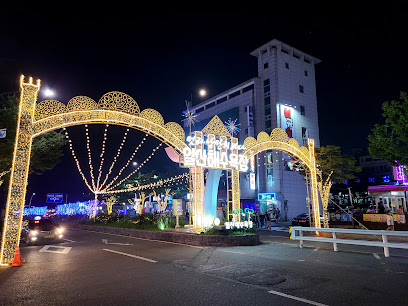
Ulsan Grand Park
Discover Ulsan Grand Park, a beautiful urban oasis in South Korea, perfect for nature lovers, families, and outdoor enthusiasts alike.

Ganwoljae Flame Grass Road
Discover the breathtaking beauty of Ganwoljae Flame Grass Road, a stunning hiking destination in Ulsan, South Korea, renowned for its vibrant autumn landscape.

Whale Cultural Village
Explore the Whale Cultural Village in Ulsan, a unique attraction celebrating maritime heritage with interactive exhibits and stunning coastal views.

Ulsan Bridge Observatory
Experience breathtaking views at Ulsan Bridge Observatory, where nature and urban beauty converge in a stunning coastal setting.

Lotte City Hotel Ulsan
Discover luxury and comfort at Lotte City Hotel Ulsan, your perfect base for exploring the vibrant city, rich culture, and stunning nature of Ulsan.

Jinha Beach
Discover the beauty of Jinha Beach in Ulsan, a perfect blend of relaxation and adventure on South Korea's stunning eastern coastline.

Taehwagang Bamboo Forest
Experience the tranquility and beauty of Taehwagang Bamboo Forest, a must-visit ecological park in Ulsan, South Korea, perfect for nature lovers and explorers.

Taehwaru Pavilion
Discover the tranquil beauty and cultural significance of Taehwaru Pavilion in Ulsan, a serene escape amidst nature's embrace.

Seongnamsa Temple
Discover the tranquility and beauty of Seongnamsa Temple, a hidden gem in Ulsan that offers spiritual solace and stunning natural surroundings.

Ganjeolgot Cape
Discover the breathtaking views and cultural richness of Ganjeolgot Cape, a serene coastal gem in Ulsan, perfect for sunrise seekers and nature lovers.

Unmissable attractions to see
Haedong Yonggungsa Temple
Discover the unique coastal beauty and spiritual tranquility of Haedong Yonggungsa Temple in Busan, a must-visit for travelers seeking serenity.

Cheomseongdae Observatory
Explore Cheomseongdae Observatory, the oldest astronomical observatory in East Asia, and a UNESCO World Heritage site in Gyeongju, South Korea.

Donggung Palace & Wolji Pond
Explore the rich history and serene beauty of Donggung Palace & Wolji Pond, a cultural treasure in Gyeongju-si, South Korea.

Bulguksa Temple
Explore the serene beauty of Bulguksa Temple, a UNESCO World Heritage site showcasing Korea's rich Buddhist heritage and stunning architecture.

The Bay 101
Discover the ultimate yacht experience at The Bay 101, where luxury meets stunning coastal views in Busan's Haeundae district.

Gyeongju National Museum
Explore the depths of Korea's history at the Gyeongju National Museum, showcasing artifacts from the ancient Silla Kingdom and beyond.

Gyeongju World
Explore Gyeongju World, where thrilling rides meet rich cultural experiences in the heart of South Korea's historical city.

Gwangalli Beach
Explore the stunning Gwangalli Beach in Busan, a perfect blend of relaxation, vibrant nightlife, and breathtaking views of the Gwangan Bridge.

Woljeonggyo Bridge
Discover the beauty of Woljeonggyo Bridge in Gyeongju, where history meets stunning architecture amidst breathtaking natural scenery.

Busan Citizens Park
Discover the natural beauty and cultural vibrancy of Busan Citizens Park, a serene urban oasis in the heart of Busanjin District.

Tongdosa Temple
Explore the serene beauty and rich history of Tongdosa Temple, a prominent Buddhist sanctuary in South Korea's Gyeongsangnam-do province.

Taehwagang National Garden
Explore the tranquil beauty of Taehwagang National Garden in Ulsan, a perfect blend of nature, culture, and seasonal charm.

Daewangam Park
Explore the natural beauty and cultural significance of Daewangam Park in Ulsan, a serene destination for relaxation and outdoor activities.

Gyeongju Gyochon Traditional Village
Explore the charm of Gyeongju Gyochon Traditional Village – a cultural treasure that highlights Korea's rich history and traditional lifestyle.

Cheongsapo Daritdol Observatory
Discover breathtaking coastal views and a serene atmosphere at Cheongsapo Daritdol Observatory in Busan, the perfect spot for relaxation and stunning photography.

Essential places to dine
아키라
Savor the authentic taste of handmade udon noodles at 아키라 - a culinary treasure in Ulsan.
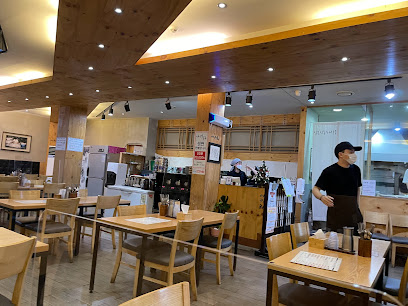
Grappa Pizzeria
Experience the best of Italian cuisine at Grappa Pizzeria in Dong-gu, Ulsan - where every bite feels like a slice of Italy.

쿠우쿠우 굴화하나로마트점
Experience the ultimate buffet dining at 쿠우쿠우 굴화하나로마트점 in Ulsan with an extensive selection of global cuisines for every palate.
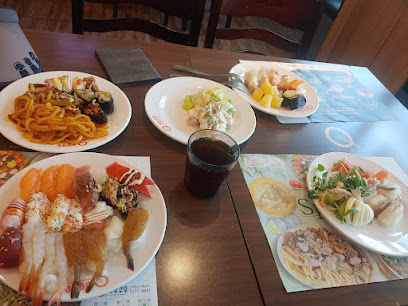
정나루
Discover authentic Korean flavors at Jeongnaru in Ulsan - a culinary gem offering delightful dishes in a warm and inviting atmosphere.

Excellent Eel
Indulge in exquisite Unagi dishes at Excellent Eel - where tradition meets culinary excellence in Ulsan.

Namaskar Samsan Store
Discover authentic Indian cuisine at Namaskar Samsan Store in Ulsan—where every dish tells a story of tradition and flavor.

아비아채 하사정점 1920
Experience Ulsan's finest brunch at 아비아채 하사정점 1920 - where delicious flavors meet inviting ambiance.

굴하우스
Savor authentic Korean dishes at 굴하우스 in Ulsan – where tradition meets flavor in every bite.

Anima
Discover authentic Italian flavors at Anima in Ulsan - where every meal is crafted with passion and tradition.

Bela Moti
Discover the authentic taste of India at Bela Moti in Ulsan - a culinary gem serving exquisite Indian dishes in a warm atmosphere.

호훈테이블
Discover authentic Italian cuisine at 호훈테이블 in Ulsan - where every meal feels like a trip to Italy.

225토마토스트릿
Experience culinary excellence at 225 Tomato Street in Ulsan - where tradition meets innovation in every delicious bite.

사이먼스테이크 롯데백화점 울산점
Experience top-notch steaks at Simon's Steak in Ulsan - where quality meets flavor in an elegant setting.

Bujohwa
Discover authentic Italian flavors at Bujohwa in Ulsan – where every meal is a celebration of culinary artistry.

이자와 울산더테라스가든점
Discover authentic Japanese flavors at 이자와 울산더테라스가든점 in Ulsan - a must-visit Syokudo and Teishoku restaurant.

Markets, malls and hidden boutiques
Costco Wholesale - Ulsan Branch
Explore Costco Wholesale in Ulsan for unbeatable deals on a wide range of products, from groceries to electronics, all under one roof.

Emart Ulsan
Discover the ultimate shopping experience at Emart Ulsan, where local flavors meet international brands in a bustling hypermarket atmosphere.

LOTTE Department Store Ulsan
Explore the vibrant LOTTE Department Store Ulsan for a premier shopping experience blending local culture with luxury brands.

UP SQUARE
Explore UP SQUARE in Ulsan, a vibrant shopping mall featuring diverse stores, delicious dining options, and exciting entertainment for every visitor.
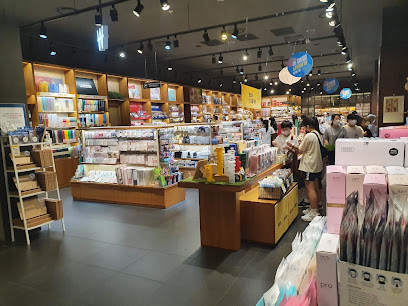
Hyundai Department Store
Explore Hyundai Department Store in Ulsan for a unique blend of modern shopping and traditional Korean culture.

Daiso
Explore Daiso in Ulsan for an affordable range of stylish home goods, unique gifts, and practical essentials that brighten your living space.

Ulsan Young Street
Discover the vibrant shopping scene at Ulsan Young Street, where fashion meets culture in the heart of South Korea.

Ulsan Qinshan Duty
Discover exclusive luxury items and local treasures at Ulsan Qinshan Duty, the premier duty-free shopping destination in vibrant Ulsan.

SKT world
Experience shopping bliss at SKT World, Ulsan's premier mall, offering diverse shopping, dining, and family-friendly entertainment options.

:DEUKK MARKET
Discover a world of fun and creativity at DEUKK MARKET, Ulsan's premier toy store, where every visit sparks joy for all ages.
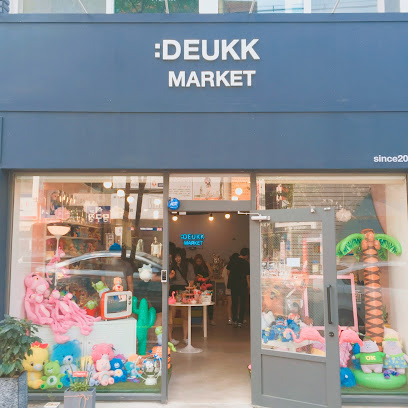
BVLGARI
Experience the epitome of luxury with BVLGARI in Ulsan, where exquisite jewelry and fashion accessories await discerning tourists.

아식스 울산진장롯데마트점
Explore Asics Ulsan Jinjang Lotte Mart for top-notch sporting goods, stylish apparel, and expert advice for sports enthusiasts in Korea.

Samsan
Explore Samsan in Ulsan – A vibrant shopping district renowned for its cosmetics stores and rich cultural experience.

Super Size Ulsan Univ
Explore the vibrant shopping experience at Super Size Ulsan Univ, where trendy fashion meets local culture in the heart of Ulsan.

아식스 울산점
Discover top-quality sportswear at Asics Ulsan, where performance meets style in a city rich with culture and activity.

Essential bars & hidden hideouts
Thursday Party
Experience the vibrant nightlife of Ulsan at Thursday Party, where delicious cocktails and lively atmosphere await every night of the week.

JJ's Bar
Discover the lively atmosphere and extensive drink selection at JJ's Bar, a must-visit nightlife spot in Ulsan, South Korea.

역전할머니맥주 울산대점
Discover the essence of Ulsan's nightlife at 역전할머니맥주 울산대점, a lively bar offering local craft beers and delicious snacks in a vibrant atmosphere.
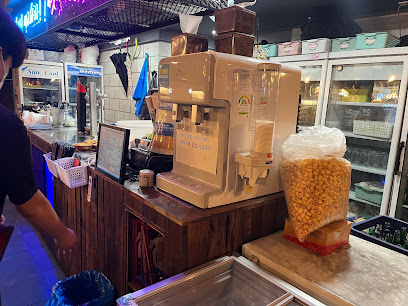
Stand By Me
Experience Ulsan's vibrant nightlife at Stand By Me, a cozy bar offering local drinks and a welcoming atmosphere for all visitors.

Cima Bar
Experience the vibrant nightlife of Ulsan at Cima Bar, where great drinks and a welcoming atmosphere await you.
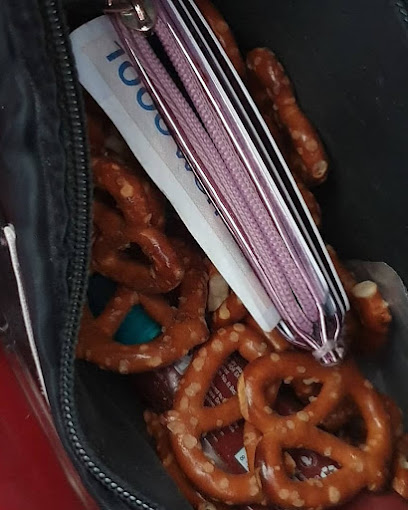
Boseu
Discover the lively spirit of Ulsan at Boseu, a vibrant pub offering a diverse beverage selection and a welcoming atmosphere for all.

아와비
Discover Ulsan's lively bar scene at 아와비, where local flavors meet a vibrant atmosphere perfect for relaxation and socializing.

생활맥주 울산국가정원점
Immerse yourself in Ulsan's craft beer scene at Living Beer Garden, a lively bar with a unique selection and beautiful surroundings.

PSICK BEER
Discover PSICK BEER, Ulsan's vibrant bar offering a wide selection of beers in a lively atmosphere perfect for socializing and unwinding.

House Ulsan
Experience the vibrant nightlife at House Ulsan, a premier bar in Nam-gu offering delicious drinks and a lively ambiance for an unforgettable evening.

700비어
Discover the vibrant nightlife of Ulsan at 700비어, a local bar offering a diverse selection of beers and a welcoming atmosphere for all.

추억스케치
Discover Ulsan's vibrant nightlife at 추억스케치, a lively bar featuring live music and a welcoming atmosphere.

Music Lounge Ulsan
Discover Ulsan's vibrant nightlife at Music Lounge, the ultimate live music bar with captivating performances and exquisite cocktails.

카츠
Explore the lively nightlife at 카츠, a premier bar in Ulsan, offering a diverse drink selection and a vibrant atmosphere for an unforgettable experience.

바이킹맥주
Experience the vibrant craft beer scene at Viking Beer in Ulsan, where local flavors and a friendly atmosphere await every visitor.

Local Phrases
-
- Hello안녕하세요
[annyeonghaseyo] - Goodbye안녕히 가세요
[annyeonghi gaseyo] - Yes네
[ne] - No아니요
[aniyo] - Please/You're welcome부탁합니다/천만에요
[butakhamnida/cheonmaneyo] - Thank you감사합니다
[gamsahamnida] - Excuse me/Sorry죄송합니다
[joesonghamnida] - How are you?어떻게 지내세요?
[eotteoke jinaeseyo?] - Fine. And you?잘 지내요. 그리고 당신은?
[jal jinaeyo. geurigo dangsineun?] - Do you speak English?영어 할 줄 아세요?
[yeongeo hal jul aseyo?] - I don't understand이해하지 못해요
[ihaehaji mothaeyo]
- Hello안녕하세요
-
- I'd like to see the menu, please메뉴를 보고 싶어요
[menyureul bogo sipeoyo] - I don't eat meat고기를 먹지 않아요
[gogireul meokji anayo] - Cheers!건배!
[geonbae!] - I would like to pay, please계산하고 싶어요
[gyesanhago sipeoyo]
- I'd like to see the menu, please메뉴를 보고 싶어요
-
- Help!도와주세요!
[dowajuseyo!] - Go away!사라져주세요!
[sarajyeojuseyo!] - Call the Police!경찰을 불러주세요!
[gyeongchareul bulreojuseyo!] - Call a doctor!의사를 불러주세요!
[uisareul bulreojuseyo!] - I'm lost길을 잃었어요
[gireul ilheosseoyo] - I'm ill아파요
[apayo]
- Help!도와주세요!
-
- I'd like to buy...사고 싶어요...
[sago sipeoyo...] - I'm just looking둘러보고 있어요
[dulleobogo isseoyo] - How much is it?얼마에요?
[eolmaeyo?] - That's too expensive너무 비싸요
[neomu bissayo] - Can you lower the price?가격을 내릴 수 있어요?
[gageogeul naeril su isseoyo?]
- I'd like to buy...사고 싶어요...
-
- What time is it?지금 몇 시에요?
[jigeum myeot sieyo?] - It's one o'clock한 시에요
[han sieyo] - Half past (10)십 시 반
[sip si ban] - Morning아침
[achim] - Afternoon오후
[ohu] - Evening저녁
[jeonyeok] - Yesterday어제
[eoje] - Today오늘
[oneul] - Tomorrow내일
[naeil] - 1일
[il] - 2이
[i] - 3삼
[sam] - 4사
[sa] - 5오
[o] - 6육
[yuk] - 7칠
[chil] - 8팔
[pal] - 9구
[gu] - 10십
[sip]
- What time is it?지금 몇 시에요?
-
- Where's a/the...?...이 어디에 있어요?
[...i eodie isseoyo?] - What's the address?주소가 뭐에요?
[jusoga mwoeyo?] - Can you show me (on the map)?지도로 보여주세요?
[jidoro boyeojuseyo?] - When's the next (bus)?다음 버스가 언제와요?
[daeum beoseuga eonjewayo?] - A ticket (to ....)표 하나 주세요
[pyo hana juseyo]
- Where's a/the...?...이 어디에 있어요?
History of Ulsan
-
Ulsan's history can be traced back to prehistoric times, with archaeological findings indicating human habitation as far back as the Paleolithic era. The Bangudae Petroglyphs, located in Daegok-ri, are some of the most significant artifacts from this period, depicting a variety of animals and hunting scenes dating to around 7,000 BC.
-
During the Silla Kingdom (57 BC – 935 AD), Ulsan emerged as a significant port city due to its strategic location along the southeastern coast. The city was known as 'Haejwa' and served as a crucial maritime hub for trade and military expeditions. This period marked the beginning of Ulsan's long-standing relationship with the sea.
-
In the Goryeo Dynasty (918–1392), Ulsan continued to thrive as a key maritime center. The Songdo area in Ulsan was a bustling port that facilitated trade with China and other neighboring countries. Ulsan's coastal waters were also known for their rich marine resources, which contributed to the local economy.
-
During the late 16th century, Ulsan became a focal point in the Imjin War (1592-1598) when Japanese forces invaded Korea. The Siege of Ulsan in 1597 was a pivotal battle where Korean and Ming Chinese forces attempted to reclaim the Ulsan Japanese Castle. Although the siege was unsuccessful, it highlighted Ulsan's strategic importance. In the subsequent Joseon Dynasty (1392–1897), Ulsan continued to develop as a prominent fishing and trading center.
-
The 20th century marked a significant transformation for Ulsan, particularly with the establishment of Hyundai's industrial complex in the 1960s. Ulsan evolved into a major industrial powerhouse, driven by Hyundai Heavy Industries, Hyundai Motor Company, and other key industries. This industrial boom brought rapid urbanization, making Ulsan one of South Korea's most economically significant cities.
-
Despite its industrial growth, Ulsan has preserved its cultural heritage. The city is home to several historical sites, including the Seoknamsa Temple, a serene Buddhist site with roots in the Silla period. Ulsan Grand Park and Taehwagang National Garden are modern attractions that blend natural beauty with cultural elements, offering a glimpse into both the historical and contemporary aspects of Ulsan.
Ulsan Essentials
-
Ulsan is located in the southeastern part of South Korea. The nearest international airport is Gimhae International Airport in Busan, approximately 70 kilometers away. From the airport, you can take an express bus or a KTX train to Ulsan, with the journey typically taking around 1 to 1.5 hours. Alternatively, you can take a domestic flight to Ulsan Airport from Gimpo Airport in Seoul. Ulsan is also well-connected by KTX high-speed trains from major cities like Seoul, Busan, and Daegu.
-
Ulsan has a well-developed public transportation system, including buses and taxis. The Ulsan City Bus system covers most areas, and taxis are readily available and relatively inexpensive. For intercity travel, the KTX (Korea Train Express) provides a fast and convenient option. Additionally, renting a car is a viable option if you wish to explore the outskirts and nearby attractions at your own pace.
-
The official currency in South Korea is the South Korean Won (KRW). Credit cards are widely accepted in hotels, restaurants, and shops in Ulsan. However, it's advisable to carry some cash for smaller establishments and markets. ATMs are plentiful throughout the city, and many offer international withdrawal services. Currency exchange can be done at banks and authorized money changers.
-
Ulsan is generally a safe city for tourists. However, like any urban area, it is advisable to take standard precautions. Avoid walking alone at night in unfamiliar areas and be mindful of your belongings in crowded places. There are no specific high-crime areas targeting tourists in Ulsan, but it is always best to stay vigilant and aware of your surroundings.
-
In case of emergency, dial 119 for immediate assistance, which connects you to fire, ambulance, and rescue services. For police assistance, dial 112. Ulsan has several hospitals and medical facilities that provide quality care. It is recommended to have travel insurance that covers medical emergencies. For minor health issues, there are many pharmacies where you can purchase over-the-counter medications.
-
Fashion: Do dress modestly, especially when visiting religious or historical sites. Avoid overly revealing clothing. Religion: Do respect local customs and traditions. Remove your shoes when entering homes and certain traditional establishments. Public Transport: Do be respectful and give up your seat to elderly passengers, pregnant women, and people with disabilities. Don't speak loudly on public transport. Greetings: Do greet people with a slight bow or a handshake. It's polite to use both hands when giving or receiving something. Eating & Drinking: Do try local delicacies and accept food offerings graciously. Don't leave food uneaten, as it can be considered impolite.
-
To experience Ulsan like a local, visit the traditional markets such as Ulsan Jungang Market, where you can buy fresh produce and local delicacies. Engage with locals, as they are often friendly and willing to share stories about their city. Don't miss visiting the Taehwagang River Grand Park, which offers beautiful scenery and a relaxing atmosphere. For a unique experience, take a trip to the Ulsan Industrial Complex to see the city's industrial might and visit the nearby Jangsaengpo Whale Culture Village to learn about Ulsan's whaling history.
Trending Landmark in Ulsan
-
Taehwagang National Garden
-
Daewangam Park
-
Jangsaengpo Whale Museum, Ulsan
-
Amethyst Cavern Park
-
Ilsan Beach
-
Ulsan Grand Park
-
Ganwoljae Flame Grass Road
-
Whale Cultural Village
-
Ulsan Bridge Observatory
-
Lotte City Hotel Ulsan
-
Jinha Beach
-
Taehwagang Bamboo Forest
-
Taehwaru Pavilion
-
Seongnamsa Temple
-
Ganjeolgot Cape
Nearby Cities to Ulsan
-
Things To Do in Gyeongju
-
Things To Do in Busan
-
Things To Do in Pohang
-
Things To Do in Daegu
-
Things To Do in Andong
-
Things To Do in Suncheon
-
Things To Do in Daejeon
-
Things To Do in Jeonju
-
Things To Do in Gwangju
-
Things To Do in Fukuoka
-
Things To Do in Mokpo
-
Things To Do in Suwon
-
Things To Do in Chuncheon
-
Things To Do in Seoul
-
Things To Do in Incheon










